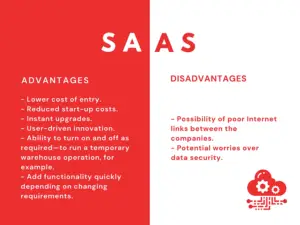Having warehouse management software is inevitable in today’s logistics environment where consumer’s expectations and e-commerce play an increasingly important role in setting delivery times.
The benefits of WMS are numerous
- Increased speed to operations
- Remote visibility and traceability of good
- More efficient equipment and labor management
- Fewer errors
- Lesser stock returns
- Reduced administrative cost
- Greater customer satisfaction
- Increased storage space
Studies show that, by adopting a WMS, a company can increase its warehouse efficiency by as much as 25% while regaining up to 30% of its available space.
So, it’s high time your company gets a Warehouse Management Software.
In this guide, we will guide you through the steps involved in choosing the right WMS.
You May Also Like to Read: Benefits of Warehouse Management System
Define your Requirements and Budget
What process do you like to automate?
What kind of cost need to be reduced?
What is your budget?
What increase in operating profit will make the implementation project a success? What ROI are you expecting from warehouse automation?
Think about these questions.
Then clearly define the goals and problems the WMS should solve.
Decide on the ‘must-have’ and ‘good to have’ features for your software.
What Type of Software?
Mainly, two types of WMS softwares are prevelant in the market.
One is a one time buy, which would include cost for licensing the software as well as customer service. This option has higher initial investment and is becoming less popular.
Other is a software as a service (SAAS) which would include monthly payment for a cloud based software.

If you already have a Enterprise Resource Planning (ERP) software, you should enquire if they have an WMS software. This would promote better integration and might also prove to be more cost effective. Else, if you are licensing a new software check for how well they can integrate with your existing ERP and other database.
Similarly, if your warehouse is highly automated—with cranes, conveyors, or sortation systems—you may wish to focus on the WMS provided by the equipment’s automation systems company. This is typically known as a warehouse control system.
Consider in-house development if the overall requirements are particularly specialized, or require specialized integration with existing in-house systems. Otherwise, inhouse development is rarely viable.
Also take into the consideration, the skills levels of your existing IT team. How fast can they learn and adapt to the new software?
Prepare a RFI
Once you have a finalized on your requirements, prepare a short request for information (RFI) document.
Include key elements like size of the warehouse, complexity of the operations involved, number of loading bays, pick face locations, number of transactions per day and so on.
Take into consideration how your warehouse operation are going to expand in the coming years.
Send it out to at least 10 vendors. Focus on suppliers that have experience in your market, this is particularly the case if you are a third-party logistics provider. You might also want to take recommendations from your competitors who have deployed similar software’s.
Create a Shortlist
Shortlist three to five Warehouse Management Software’s that match your requirement.
Now do a detailed enquiry of each of these companies.
See if they that have a track record linking to any business or ERP system you are operating.
Investigate into existing customer list, their financial history and status, future development plans and the quality of their customer service.
Arrange for the suppliers to visit you for an informal meeting. This will help you get a feel for their company—how professional they are, how carefully they listen and respond to your needs, and how well they answer your questions.
Conduct site visits at places where their software is in use. Make sure that you visit sites that are similar to yours in size and processes—or, preferably, slightly larger and more complex.
The Final Choice
Ask for demonstrations before you make the final choice. Let your team tinker with the WMS and look at how user friendly the software is.
It is very important to get a good ‘people’ fit with any organization you select. Consider asking suppliers why they think they should be selected for your project.
Don’t forget ask for the accurate project cost and a clear and detailed breakdown of current and future cost involved before signing the agreement.
Use a decision matrix to make the final choice.
If necessary, you can use the services of a consultant to help you through the whole process of choosing a WMS.
SCS consulting brings in technology, insights and supply chain expertise to drive innovation and contextual solutions for customers. Click here to get in touch with us.


3 Comments